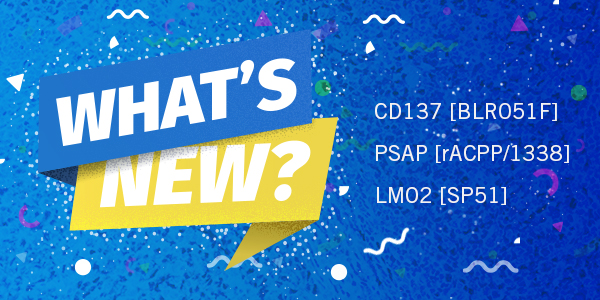Biocare’s MACH detection line utilizes the most sensitive detection technology available to provide users with crisp, clean, intense IHC staining. Customers have the choice of several MACH detection kits, depending on their staining needs. However, with so many options available, it can be difficult to make a decision. Customers should asses the capabilities of each […]
investment to accelerate growth amid an increasing market demand for Immunohistochemistry instruments and reagents Management will leverage GHO’s extensive healthcare expertise to accelerate R&D, product launches and international expansion GHO in partnership with existing investor Excellere Partners will continue to support the Biocare Medical team in accelerating strategic growth initiatives LONDON–(BUSINESS WIRE)–Global Healthcare Opportunities, or […]
As a leader in the fields of immunohistochemistry (IHC) and in situ hybridization (ISH), Biocare Medical has, for more than 20 years, offered a variety of instruments used in these staining procedures. Biocare has instruments that can meet your need for high-quality staining at a reasonable cost, whether your lab regularly performs a high volume […]
Wash buffers are an integral part of immunohistochemical (IHC) procedures. They are used after each incubation step to wash away excess reagent from the specimen and maintain a constant pH by “soaking up” any free hydrogen (H+) ions. This feature helps maintain the morphological characteristics of antibodies and their epitopes, which enables specific binding. The […]
Proper optimization is vital for successful immunohistochemical (IHC) testing. An optimal IHC protocol can be characterized by its ability to consistently and unambiguously determine how the antigen is expressed in the tissue. Optimization is fundamental to reducing the risk of both false positive and false negative results.1 The protocol must be able to identify both […]
Biocare Medical has been busy ensuring you supply the highest quality reagents for your laboratory on every automated platform. Have you seen the latest releases from us, such as CD137, PSAP and LMO2? We have increased our menu of antibodies for the Leica Bond* with our Q Series reagents and the Roche BenchMark Ultra with […]
Regular cleaning is an essential part of instrument maintenance, but what happens if you don’t have Lysol? Following recommended cleaning procedures to remove residues and sterilize instrument components will improve instrument performance and help extend the instrument’s lifespan. This white paper looks at Lysol alternatives for cleaning to ensure your automation platform keeps running perfectly! […]
As anyone who has worked in histology will tell you, a successful staining process begins long before the staining protocol itself. In fact, factors that will determine a stain’s success or failure start to come into play soon as the tissue is removed from the patient’s body. As such, proper education and training for all […]
Validation is an essential step for setting up a new laboratory procedure, whether it incorporates immunohistochemical (IHC) or routine ematoxylin and eosin (H&E) staining. The validation process involves repeatedly testing the procedure over a large quantity and range of specimens in order to ensure the procedure will yield consistent and reproducible results. This, in turn, […]
Tissue microarrays (TMAs) are paraffin blocks that include multiple samples from different tissue types meant to provide a comprehensive multiplex staining profile. The sections from TMA blocks can be used for all types of tissue staining techniques, including immunohistochemistry and in situ hybridization. In order to create a TMA block, cylindrical tissue samples are collected […]











